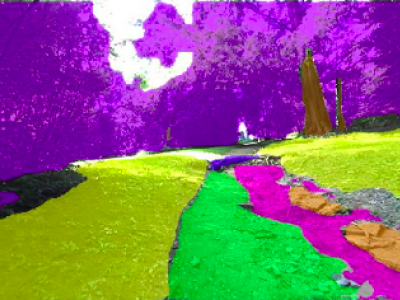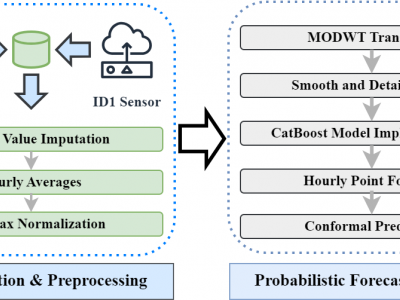Sensors
This dataset contains Wi-Fi sensing data using Channel State Information (CSI) for various sleep disturbance parameters, from respiratory disturbances, to motion-based disturbances from posture shifts, leg restlessness and confusional arousals.The Wi-Fi CSI data was collected using the Wi-Fi module on the ESP32 Microcontroller units using the esp32-csi-tool.The Wi-Fi CSI respiratory disturbance data is accompanied by respiration belt data taken with the Wi-Fi measurements simultaneously using the Neulog NUL-236 respiration belt logger as ground truth.
- Categories:
 543 Views
543 ViewsThis work presents a specialized dataset designed to advance autonomous navigation in hiking trail and off-road natural environments. The dataset comprises over 1,250 images (640x360 pixels) captured using a camera mounted on a tele-operated robot on hiking trails. Images are manually labeled into eight terrain classes: grass, rock, trail, root, structure, tree trunk, vegetation, and rough trail. The dataset is provided in its original form without augmentations or resizing, allowing end-users flexibility in preprocessing.
- Categories:
 477 Views
477 Views
This data was collected using a Bosch Parking Lot Sensor (TPS110 EU) placed in a time-limited public parking space over a period of two months. Each time the sensor detected a change in the parking status, it transmitted the new state via The Things Stack LoRaWAN network to the server.
- Categories:
 55 Views
55 Views
These are some graphs that record the human ocular electrical signals and ocular impedance signals, each image from top to bottom is a time-frequency graph of the EOG, the EOG signals, the time-frequency graph of the impedance signals, the impedance signals, and the impedance signals, respectively. This dataset is used to train the eye movement detection model.
- Categories:
 84 Views
84 Views
A set of non-stationary target vital sign signals measured by the FMCW radar, with data from a total of four testers, were tested for five sets of one minute each, with the testers approximately 1m away from the radar, in a non-stationary state. The radar-measured vital sign signals are stored in a .bin format file, the radar parameters are set in a Logfile.txt file, and the remaining two .txt files are the reference data collected with the respiratory and heartbeat sensors.
- Categories:
 198 Views
198 ViewsData Collection Period: Both datasets cover the period from July 1, 2022, to July 31, 2023. This one-year span captures a full cycle of seasonal variations, which are critical for understanding and forecasting air quality trends.
Data Characteristics
- Temporal Resolution: The data is recorded at 15-minute intervals, offering detailed temporal resolution.
- Missing Data: Both datasets contain missing values due to sensor malfunctions or communication issues. These missing values were handled using imputation techniques as part of the preprocessing phase.
- Categories:
 287 Views
287 ViewsThe dataset gives information about the different gait metrics such as stride length for left and right foot, stride velocity for left and right foot and cadence collected from human subjects
in a controlled environment in the presence of VR(virtual reality) scenes such as positve, negative and neutral. The PHQ-9 score of the subjects is collected and correlated with
the gait score. Decriptive statitics such as median are also collected for the difference in the gait values of specific VR environments.
- Categories:
 193 Views
193 Views
Maintaining etch uniformity from the center to the edge of the wafer during the etching process is a critical challenge. In particular, the edge of the wafer poses difficulties due to changes in the angle of ion incidence caused by the curvature of the sheath, making it challenging to achieve the desired etch pattern. Therefore, identifying and monitoring key factors that significantly impact center-to-edge uniformity is essential.
- Categories:
 64 Views
64 Views
The SiO2 etching process using CF4/O2 plasma is a critical step in semiconductor manufacturing, where process efficiency and precise control are essential. In this study, optical emission spectroscopy (OES) data was utilized in real-time to analyze the correlation between plasma conditions and the etch rate (ER) during the process. Specifically, the source and bias power were divided into four different conditions to systematically evaluate the changes in plasma characteristics and the etching process. Based on this evaluation, a physical model was developed to predict the etch rate.
- Categories:
 127 Views
127 Views


